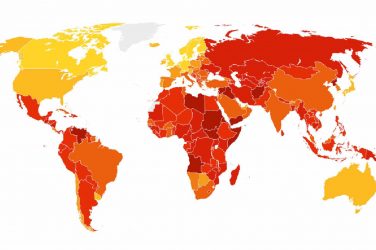The trial period is over for Mercosul, the trade agreement between Brazil and
its neighbors south of the border. After observing the rapid growth of the group,
some nations and international trade groups are more than eager to join in.
Signed in 1991, the Mercosul Common Trade agreement, grouping Brazil, Argentina, Uruguay , and Paraguay,
reached an important turning point in 1995. Early in December, the Presidents of the four countries signed in Madrid, the
first accord with another trade bloc. The pact signed with the EU (European Union) marked the acceptance of the
Mercosul in the international economic arena as well as the European confidence on its political success.
Later that same month, the Mercosul bloc signed a free-trade agreement with Bolivia, an effort to advance even
more South America’s economic integration. Furthermore, talks with Chile towards a free-trade agreement with that
country are making substantial progress. These events manifest the level of faith in the bloc and its future major role in
the economic development of Latin America.
From the European point of view, the accord with the Mercosul has political and economic resonance. Politically,
it permits the EU to maintain closer participation in a region where they have a great historical, cultural, and societal
affinity. Economically, the accord secure European companies stability, juridical guaranty and access to a market
comprehending 200 million consumers and $800 billion GDP (Gross Domestic Product). The accord sets for a free-trade area by
2005. According to Pedro Malan, the Brazilian Finance Minister, presently the Mercosul has 22 investment projects
under analysis which total $16 billion. Malan foresees a flood of investments coming in from overseas and specially from
Europe and other Latin American nations.
The European Union concentrates 38% of the world trade flow which implies a financial and commercial
dominance. Forty percent of all banks installed in the Mercosul are European, and European companies constitute the main source
of foreign investment in the four countries. For example, after a wave of privatization, Spain’s Telefonica de España
and Italy’s Societa Finanziaria Telefonica per Azioni SpA control most of all big telephone companies south of the
Panama Canal.
According to a report from Price Waterhouse, the region will experience in 1996 a year of intense activity in
mergers, acquisitions and joint-ventures. In 1995, such business activity grew 60% compared to the previous year and
foreign investment then accounted for 38%. Brazil, Argentina, Uruguay and Paraguay are responsible for one third of
Latin America’s total trade and 70% of Latin America’s total GDP. The EU is their main partner, reaching in 1995 a record
high in volume of trade 27% of Mercosul’s total exports was to the EU while 17% went to NAFTA (North American
Free Trade Agreement), and 26% of the total imports came from the EU against 23% from NAFTA.
Another important achievement to the market economy of the Mercosul was reached with Bolivia. The so-called
4-plus-1 agreement, serves as a free-trade bridge connecting the Mercosul to the Andean Pact a bloc constituted
by Bolivia, Colombia, Ecuador, Peru, and Venezuela. The reason for this type of agreement lies on a Mercosul
regulation which forbids member countries to individually join other blocs. However, the Andean Pact countries can.
A major infra-structure project necessary to integrate both blocs is under way. A 3,440 km (2,137 miles) of
navigable rivers will constitute the Paraguay-Paraná and the Tietê-Paraná waterways. These waterway systems will
lower transportation cost of all products traded within the region. Furthermore, talks to sign a 4-plus-1 agreement with Chile
have already started. And Chile has signed a free-trade agreement with Mexico and is currently working to sign another
one with Canada. Even Guyana, once a strong nationalistic country, is talking to open its borders to Brazil.
In a recent article published in the Wall Street Journal
titled, “Latin Nations, unsure of US motives, make their
own trade pacts,” shows Mercosul’s alternative to expand its borders. The article states that Chile’s acceptance of NAFTA
has encountered strong opposition from the US Congress which lead to Chilean officials to bypass American
bureaucracy towards freer trade. The simultaneous resignation of six US government officials responsible for Latin American
foreign policies and the delay in replacing them shows the lack of US concern with the region. According to US
Trade Representative, Mickey Kantor, “the greatest victims of tariff and nontrade barriers are small and
medium-size companies.”
For example, a Massachusetts textile
company, Quaker Fabric Corp., is a having a hard time selling in
Argentina. That country benefits from duty-free textiles from Brazil
and competition from US goods, after a 25% tariff, is minor. US textile
in the Mercosul has also strong competition from fabrics coming from
England, France, Italy and Belgium which by 2005 will benefit from a
tariff-free market. US executives are disappointed with Washington
which is promising too much but doing too little to integrate the
economy with neighboring countries. Caterpillar, a US manufacturer of
heavy agriculture machinery, said that after Chile joins Mercosul,
sales from US factories will be shifted to Brazilian factories. At the
end, US workers will be the losers. As Latin America develops, the
business environment will become more difficult for US companies.
In the past few months, many trade agreements between the Mercosul and other countries have been signed.
State leaders have gone back and forth while other nations are just watching Mercosul’s development. In 1995, trade
among Brazil, Argentina, Uruguay and Paraguay doubled to $16 billion. As Ford’s President, Alex Trotman, stated in
January at Switzerland’s World Economic Forum, “Mercosul is just starting its future.”









